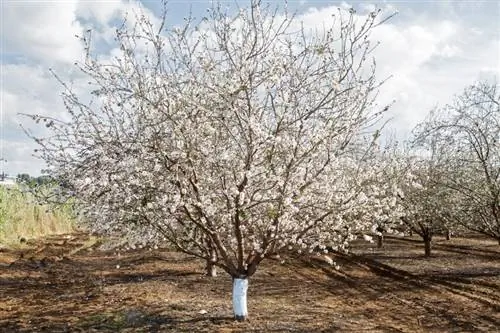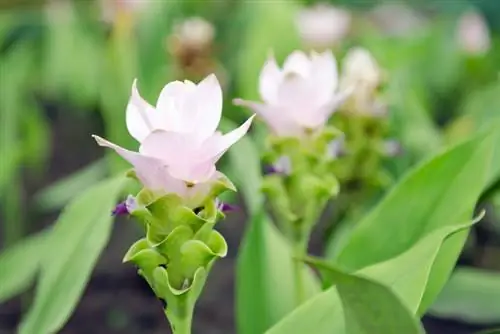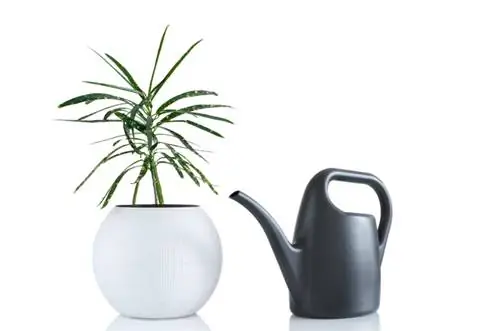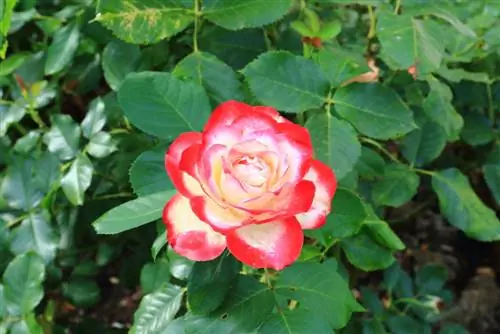- Author admin [email protected].
- Public 2023-12-16 16:46.
- Last modified 2025-01-23 11:20.
Montbretia are perennial tuberous plants that are originally native to the warm mountain regions of South Africa. They require relatively little care and are easy to cultivate. However, there are some basic points that need to be taken into account when it comes to Montbretias so that the plants bloom magnificently every year.

How do I care for Montbretien properly?
Montbretien care includes regular watering, fertilizing before flowering, transplanting every 3-4 years and foliage pruning after flowering. In winter they need protection from the cold or frost-free storage of the tubers. Protect them from waterlogging and pests such as mice and thrips.
Water requirements
In summer it is relatively humid in the homeland of the Montbretien. That's why the heat-loving garden beauties need sufficient moisture even in our latitudes. In contrast to the wild forms, the bred Montbretias tolerate hard water very well, so you don't necessarily have to use rainwater for regular watering. Water the montbretias whenever the surface of the soil feels dry. This may be necessary twice a day on hot summer days.
When is fertilization done?
During the flowering period, the Montbretie needs a lot of nutrients. Therefore, fertilize outdoor plants in early summer before flowering with a long-term flowering plant fertilizer (€14.00 on Amazon). Covering with nutrient-rich compost in winter and adding humus to the soil have also proven to be effective. If you have cultivated the Montbretias in a pot, you should supply the plants with liquid fertilizer weekly.
Transplant regularly
Since Montbretia are heavy feeders, it is advisable to move them to a new location every three to four years.
Do Montbretias need to be cut?
After flowering, the dead shoot should be cut out. If the Montbretias overwinter outdoors, the foliage is not shortened in autumn because it serves as natural protection against the cold. Don't cut this until spring.
Wintering in Montbretia
Montbretia are conditionally hardy. Depending on the climate in your region, you can overwinter the flowering plants outdoors, well protected by a thick layer of leaves or mulch. In regions where there is a risk of deep frosts, you should dig up the tubers in autumn and store them indoors.
Pests and diseases
Mice love Montbretien tubers. Plant baskets in which you place the onions help against hungry rodents. Occasionally the Montbretias are attacked by thrips (cystaceous fungi). An infestation with aphids is rather rare.
Tip
Since Montbretia is very sensitive to waterlogging, you should add a drainage layer of sand or gravel to the planting hole when planting. Excess water can drain away quickly and root rot is avoided.






